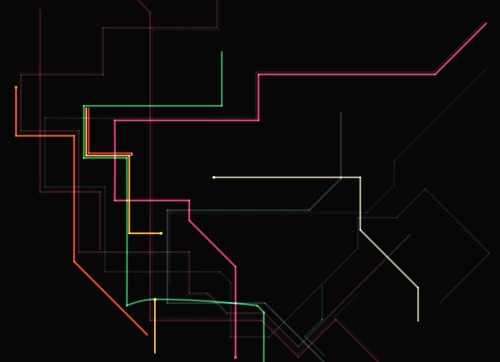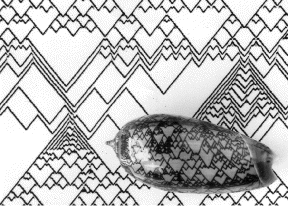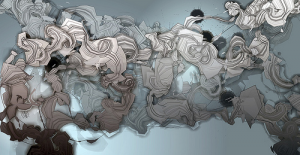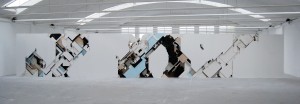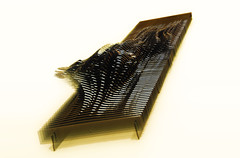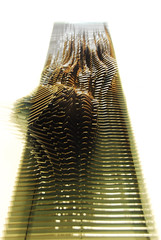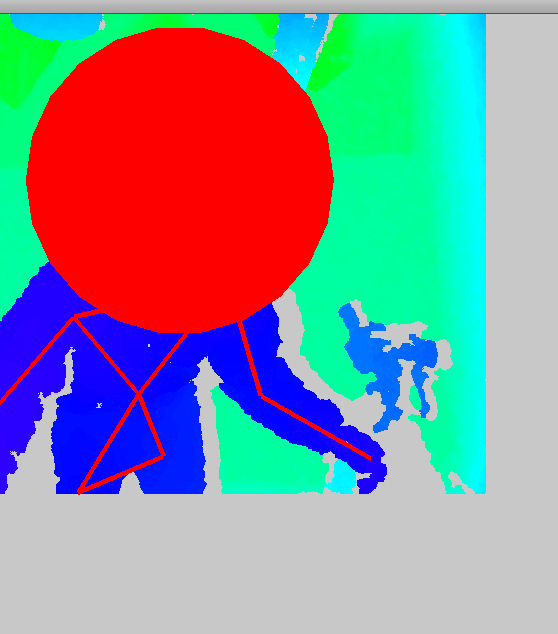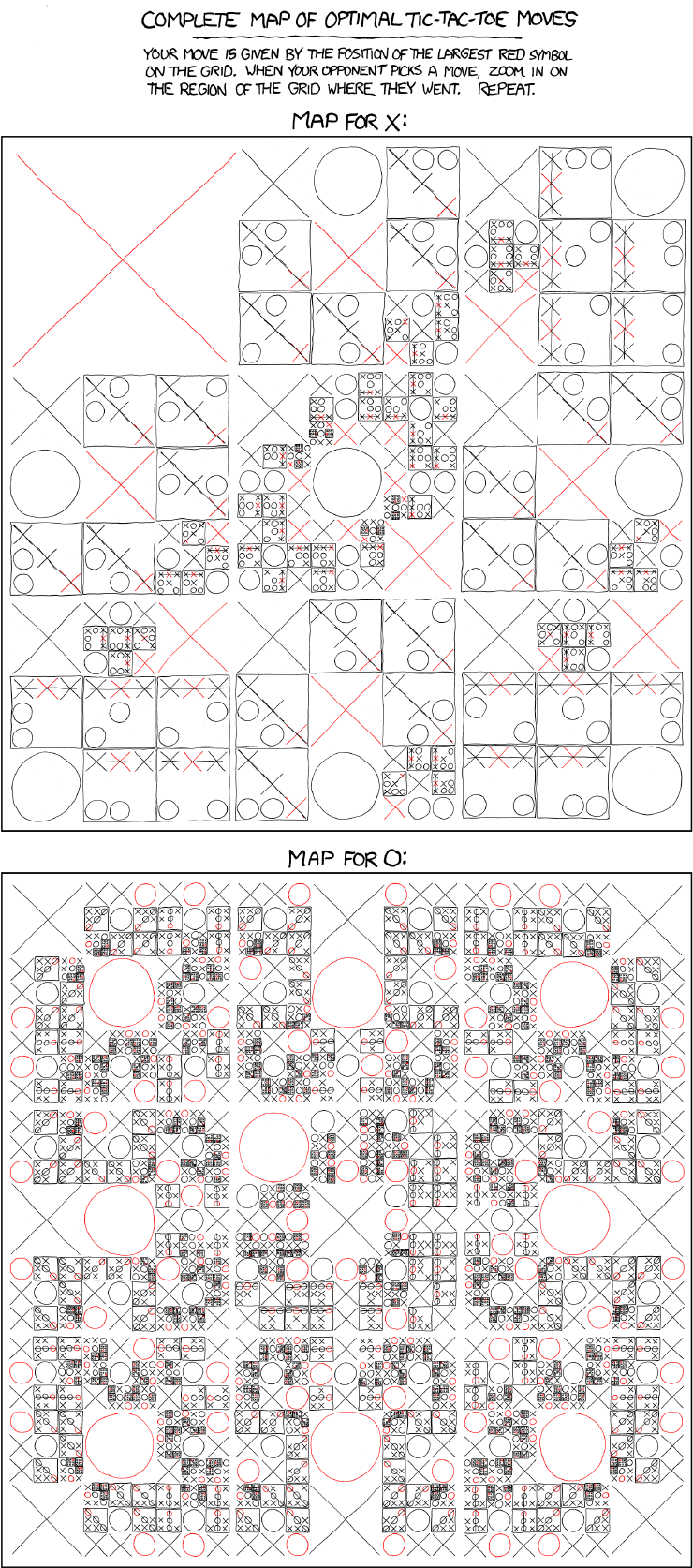#include "ofxTrackedUser.h"
#include "ofxDepthGenerator.h"
#include "ofxUserGenerator.h"
float xL;
float yL;
float xR;
float yR;
float zDEPTH;
ofxTrackedUser::ofxTrackedUser(
ofxUserGenerator* pUserGenerator
,ofxDepthGenerator* pDepthGenerator
)
:neck(XN_SKEL_HEAD, XN_SKEL_NECK)
// left arm + shoulder
,left_shoulder(XN_SKEL_NECK, XN_SKEL_LEFT_SHOULDER)
,left_upper_arm(XN_SKEL_LEFT_SHOULDER, XN_SKEL_LEFT_ELBOW)
,left_lower_arm(XN_SKEL_LEFT_ELBOW, XN_SKEL_LEFT_HAND)
// right arm + shoulder
,right_shoulder(XN_SKEL_NECK, XN_SKEL_RIGHT_SHOULDER)
,right_upper_arm(XN_SKEL_RIGHT_SHOULDER, XN_SKEL_RIGHT_ELBOW)
,right_lower_arm(XN_SKEL_RIGHT_ELBOW, XN_SKEL_RIGHT_HAND)
// upper torso
,left_upper_torso(XN_SKEL_LEFT_SHOULDER, XN_SKEL_TORSO)
,right_upper_torso(XN_SKEL_RIGHT_SHOULDER, XN_SKEL_TORSO)
// left lower torso + leg
,left_lower_torso(XN_SKEL_TORSO, XN_SKEL_LEFT_HIP)
,left_upper_leg(XN_SKEL_LEFT_HIP, XN_SKEL_LEFT_KNEE)
,left_lower_leg(XN_SKEL_LEFT_KNEE, XN_SKEL_LEFT_FOOT)
// right lower torso + leg
,right_lower_torso(XN_SKEL_TORSO, XN_SKEL_RIGHT_HIP)
,right_upper_leg(XN_SKEL_RIGHT_HIP, XN_SKEL_RIGHT_KNEE)
,right_lower_leg(XN_SKEL_RIGHT_KNEE, XN_SKEL_RIGHT_FOOT)
,hip(XN_SKEL_LEFT_HIP, XN_SKEL_RIGHT_HIP)
,user_generator(pUserGenerator)
,depth_generator(pDepthGenerator)
,xn_user_generator(&user_generator->getXnUserGenerator())
,is_tracked(false)
{
}
void ofxTrackedUser::updateBonePositions() {
updateLimb(neck);
// left arm + shoulder
updateLimb(left_shoulder);
updateLimb(left_upper_arm);
updateLimb(left_lower_arm);
// right arm + shoulder
updateLimb(right_shoulder);
updateLimb(right_upper_arm);
updateLimb(right_lower_arm);
// upper torso
updateLimb(left_upper_torso);
updateLimb(right_upper_torso);
// left lower torso + leg
updateLimb(left_lower_torso);
updateLimb(left_upper_leg);
updateLimb(left_lower_leg);
// right lower torso + leg
updateLimb(right_lower_torso);
updateLimb(right_upper_leg);
updateLimb(right_lower_leg);
updateLimb(hip);
}
void ofxTrackedUser::updateLimb(ofxLimb& rLimb) {
if(!xn_user_generator->GetSkeletonCap().IsTracking(id)) {
//printf("Not tracking this user: %d\n", id);
return;
}
XnSkeletonJointPosition a,b;
xn_user_generator->GetSkeletonCap().GetSkeletonJointPosition(id, rLimb.start_joint, a);
xn_user_generator->GetSkeletonCap().GetSkeletonJointPosition(id, rLimb.end_joint, b);
if(a.fConfidence < 0.3f || b.fConfidence < 0.3f) {
rLimb.found = false;
return;
}
XnPoint3D pos[2];
pos[0] = a.position;
pos[1] = b.position;
depth_generator->getXnDepthGenerator()
.ConvertRealWorldToProjective(2, pos, pos);
rLimb.found = true;
rLimb.begin.set(pos[0].X, pos[0].Y);
rLimb.end.set(pos[1].X, pos[1].Y);
ofSetColor(255, 0, 0);
//ofCircle(pos[0].X, pos[0].Y, 5);
float xL = left_upper_arm.begin.x;
float yL = left_upper_arm.begin.y;
float xR = right_upper_arm.begin.x;
float yR = right_upper_arm.begin.y;
zDEPTH = xR - xL;
}
void ofxTrackedUser::debugDraw() {
neck.debugDraw();
// left arm + shoulder
left_shoulder.debugDraw();
left_upper_arm.debugDraw();
left_lower_arm.debugDraw();
// right arm + shoulder
right_shoulder.debugDraw();
right_upper_arm.debugDraw();
right_lower_arm.debugDraw();
// upper torso
left_upper_torso.debugDraw();
right_upper_torso.debugDraw();
// left lower torso + leg
left_lower_torso.debugDraw();
left_upper_leg.debugDraw();
left_lower_leg.debugDraw();
// right lower torso + leg
right_lower_torso.debugDraw();
right_upper_leg.debugDraw();
right_lower_leg.debugDraw();
hip.debugDraw();
ofDrawBitmapString(ofToString((int)id),neck.begin.x+ 10, neck.begin.y);
ofCircle(neck.begin.x, neck.begin.y, zDEPTH);
} |
